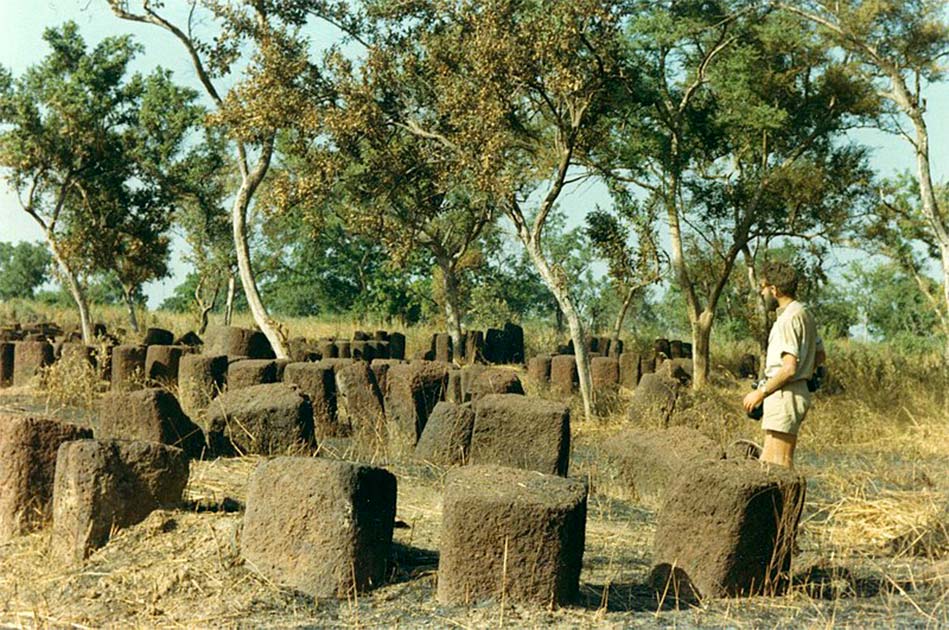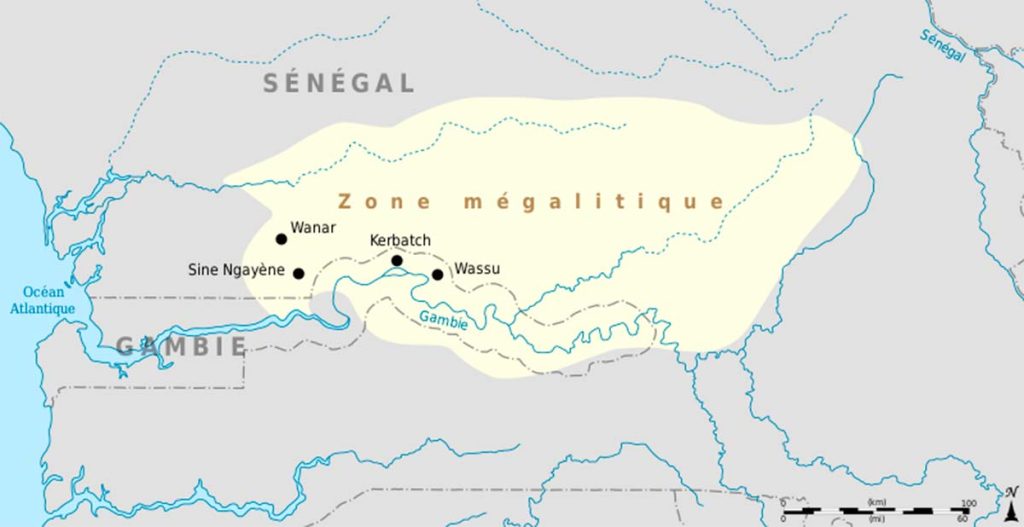The Senegambian stone circles, also known as the Wassu stone circles are groups of stones that date from the megalithic era and are found across the region of North Gambia and in Central Senegal. And there are an awful lot of them.
In total, they spread across a region of around 30,000 km2 (11,600 square miles). They have been categorized as both Wassu (Gambian) and Sine-Saloum (Senegalese) circles, but this division is made only by the nations that they have been found in.
Nor are they thinly spread across this vast territory. In total there are maybe 1,000 circles and another thousand similar sites, and they are thought to be the largest concentration of stone circles found anywhere in the world. Researchers believe that these areas had a sacred use across an extended period of time, perhaps as much as 1,500 years.
Due to their significance, they were placed on the UNESCO World Heritage list in 2006. But what are they and who built them?
Signs of an Advanced Civilization
The stone circles found in Senegal and Gambia are often divided into 4 large sites. In Senegal, it is the Sine Ngayene and Wanar areas whilst in Gambia, it is the Wassu and Kerbatch region. In these areas, it is estimated that there are around 17,000 monuments of up to around 29,000 stones making up 2,000 individual sites.
However, there could have been many more. Many monuments consist of blocks and pillars that have collapsed, and many have been scavenged for later construction.

The ones that haven’t are usually standing upright and mostly made of smoothed laterite. The monuments have been found made up of regular stone circles, double circles, and with columns just standing apart from stone circles or just outside of other stone circles. Researchers have called those stones frontal stones and when two are parallel in connected rows, they have been called lyre-stones.
Much research has been done to try and figure out when the stone circles were built, and researchers have come to the conclusion that it was sometime between 2300 BC and 1500 AD. This sounds like a surfeit of vagueness, but in truth it seems these circles were possibly being built for millennia, and their construction stopped only relatively recently.
- Stonehenge: A Megalithic Monument of Britain’s Ancient People
- Who Built the Bakoni Ruins of South Africa, and When?
There have also been burial mounds found associated with the stone circles, but it is unclear which came first. Small pottery shards, human remains, and grave goods have been found around the stone circles by archaeologists.
A small portion of these have been curated in the British Museum, donated by the colonial administrator Richmond Palmer. Within that collection there are especially intriguing treasures, most notably two spears and an iron bracelet.
The way that the stones have been formed and built into circles suggests that the civilization that placed them there was a prosperous one and that it was well organized. It would have taken significant labor to place these stones.
The stones themselves were extracted from quarries using iron tools and whilst few quarries have been identified, it is clear that it was done with some skill. Once the stone was taken from the quarry, it seems like identical pillars were made either in a polygonal or cylindrical shape.
The average height of these stones has been around the two-meter mark (6’ 6”) with a weight of 7 tons (6.3 tonnes). As to who built these stones, that remains a mystery, but possible candidates have been put forward.
The ancestors of the Jola people and the Wolof have potential. The Jola people are a people that have inhabited the areas around Senegal and Gambia for some time and thus it is not outlandish to think that there would have been people living there thousands of years before.

The same could be said for the people of the Wolof. However, the Serer people have also laid claim to the idea that their ancestors were builders due to the fact that they still use funerary houses like those found around the stone circles.
The Stone Circle Areas
Wassu: Wassu is located in Gambia’s Niani district and is made up of 11 stone circles. The tallest stone reaches a height of 2.59 meters (8’ 6”).
It seems that the builders of the monuments in this area had a great deal of knowledge about the local geology and possessed a great skill of quarrying as many of the stones remain unsplit and uncracked. The most recent excavations of this area happened in the 1960s with the results indicating that the burials in the area date from 927 AD to 1305 AD.
- What are the Alok Ikom Monoliths Trying to Tell Us?
- Sungbo’s Eredo: The Walls of the Real Queen of Sheba?
Kerbatch: Kerbatch is an area of Gambia found in the Nianija district and has nine stone circles and one double circle. Additionally, it has a V-shaped “bifid” stone that has been broken in three places.
It is the only one in the region to have been found to date. This stone seems to have been part of the frontal line and it was restored in 1965 when the excavation of the double circle took place under the guidance of P. Ozanne for the Anglo-Gambian Stone Circles excavation.
Wanar: Wanar is located in Senegal in the Kaffrine district and is constructed of 21 stone circles and one double circle. As well as this, there are many examples of lyre-stones in this area.
About one-third of the total Senegambian lyre-stones are found in this area. Through excavation and research, it seems that this area was primarily a burial ground before the stone circles were added. The construction period has been narrowed down to the 7th and 15th century AD.

Sine Ngayene: Sine Ngayene is the biggest area and is home to around 52 stone circles, 1102 carved stones, and one double circle and is located in Senegal just Northwest of Sine. On-site, archaeologists have found iron smelting sites and quarries in the vicinity of the stone circles.
It has been indicated that there were small, independent, and yet linked communities living in these areas. Researchers have suggested that the stone circles may have acted as cemeteries and been a focal point in the landscape that brought people together. These date to around 700AD to 1350AD
As Many Questions as Answers
There is little else that the stones can tell for now. All that can be certain is that the stones were extracted from nearby laterite quarries using iron tools before being shaped into nearly identical pillars. It is because of this that the structures likely bore witness to a society that was well organized, wealthy, and had a long tradition with stone circles and their sacred nature to them.
Top Image: The Senegambia stone circles at Wassu. Source: Peter van der Sluijs / CC BY-SA 4.0.
By Kurt Readman